#1771-1832
Text
Scotland's glorious monument to her national poet - Sir Walter Scott


The imposing Scott Monument on Princes Street in Edinburgh
#Sir Walter Scott#Scott Monument#Princes Street#Edinburgh#national poet#Gothic architecture#Scottish authors#1771-1832
16 notes
·
View notes
Text
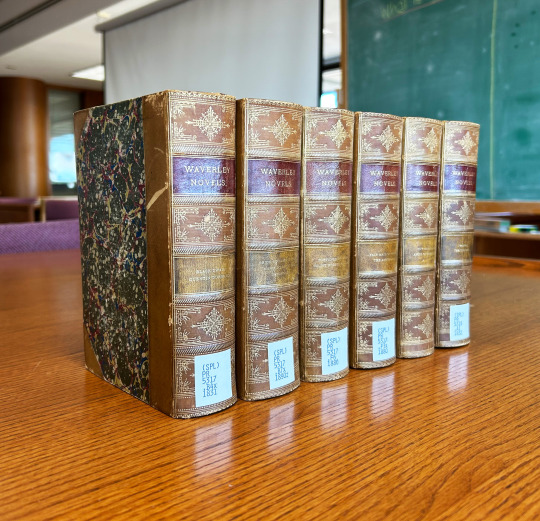






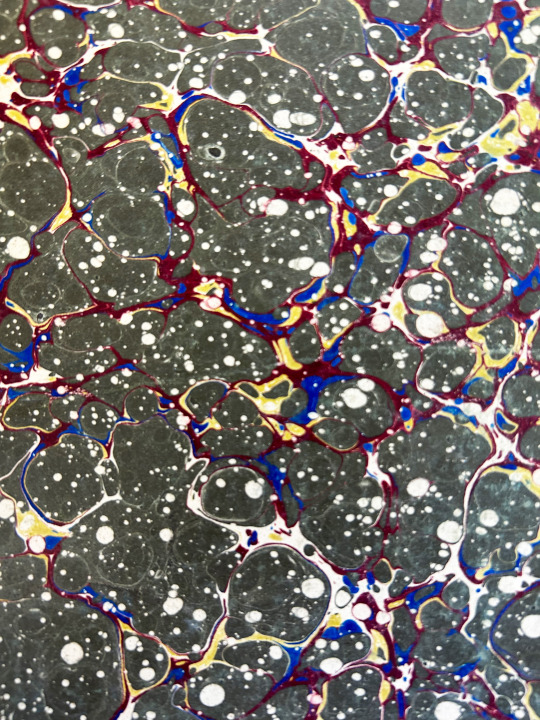

Marbled Monday
This Monday we're taking a look at a 6-volume set of the Waverley novels written by Scottish historian, poet, novelist, and playwright Sir Walter Scott (1771-1832) and originally published between 1814 and 1831. These volumes each include more than one of the novels in the Waverley "series," including what is perhaps Scott's most famous novel Ivanhoe. These volumes were published in the late 1800s, with a best guestimate of around 1880, by DeWolfe, Fiske & Co. in Boston. The Waverley novels gave Scott a reputation as the founder of the historical novel genre, as each novel is set in a different historical time period.
The books themselves are each half-bound in tan leather and marbled paper. The top, bottom, and fore-edge of each book has also been marbled in the same pattern, and the books feature the same marbling on their endpapers! Marbling everywhere! The marbling is a green base with red, blue, white, and yellow veining and white spots sprinkled over top. This is a stone pattern that is meant to look closer to actual marble than the more intricate combed marbling patterns. You can also see the wear on the outer covers of the books and see how dull and faded it is compared to the marbling on the endpapers.
View more Marbled Monday posts.
-- Alice, Special Collections Department Manager
#Marbled Monday#Waverley novels#Waverley#Sir Walter Scott#Ivanhoe#DeWolfe Fiske & Co.#marbling#marbled paper#Alice
60 notes
·
View notes
Text
THIS DAY IN GAY HISTORY
based on: The White Crane Institute's 'Gay Wisdom', Gay Birthdays, Gay For Today, Famous GLBT, glbt-Gay Encylopedia, Today in Gay History, Wikipedia, and more … December 26

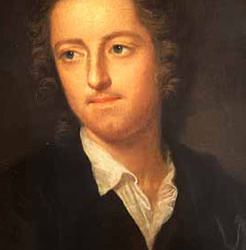
1716 – Thomas Gray, the English writer, was born on this date (d.1771).
"My life is now but a perpetual conversation with your shadow - The known sound of your voice still rings in my ears. I cannot bear this place, where I have spend many tedious years within less than a month, after you left me ..."
So wrote Thomas Gray to a young man when he was 54. Professor of Modern History at Cambridge University and one of the best known poets of his time. He was also more than likely still a virgin, although he may have had a homosexual affair with Horace Walpole when he was younger.
The author of "An Elegy Written in a Country Churchyard," Gray had lived most of his life with his mother, but was known to have cultivated the Platonic friendship of handsome young men. One of Professor Gray's young men introduced him to the Swiss charmer, Charles de Bonstetten – and Gray was hooked. He was profoundly, deeply in love. When Bonstetten left Cambridge a year later, the poet was devastated. But the friends exchanged letters, and the young man suggested they take a walking tour together in Bonstetten's native Switzerland. Gray was overjoyed. The trip was scheduled for the summer of 1771 and Gray wrote tireless letters of devotion while counting the ticking minutes. Finally, the time was near. He would be leaving to see his handsome young man again. The poor poet dropped dead before he had taken one step out the door.


1795 – William Drummond Stewart (d.1871) was a Scottish adventurer and British military officer and homosexual. He traveled extensively in the American West for nearly seven years in the 1830s. In 1837 he took along the American artist, Alfred Jacob Miller, hiring him to do sketches of the trip. Many of his completed oil paintings of American Indian life and the Rocky Mountains originally hung in Murthly Castle, though they have now been dispersed to a number of private and public collections.
Born at Murthly Castle, Perthshire, Scotland, Stewart was the second son and one of seven children of Sir George Stewart, 17th Laird of Grandtully, 5th Baronet of Murthly and of Blair. The family decided that William would go into the Army (as his older brother would inherit his father's estate and title). After his seventeenth birthday in 1812, William asked his father to buy him a cornetcy in the 6th Dragoon Guards. After his appointment was confirmed on April 15, 1813, he immediately joined his regiment and began a programme of rigorous training.
Stewart was anxious to participate in military action; so in 1813, his father purchased for him an appointment to a Lieutenancy in the 15th King's Hussars, which was already in action during the Peninsular Campaign. In 1814, Stewart joined his regiment, subsequently seeing combat during the Waterloo campaign in 1815. In 1820, Stewart was promoted to a Captain and soon thereafter retired on half pay.
Seeking adventure, Stewart traveled to St. Louis, Missouri in 1832, where he brought letters of introduction to William Clark, Pierre Chouteau, Jr.,William Ashley and other prominent residents. He arranged to accompany Robert Campbell, who was taking a pack train to the 1833 rendezvous of mountain men, an annual all-male gathering of fur traders, a drunken debauch held each summer when trappers gathered to trade their pelts for food, liquor and manufactured goods brought to the Rockies from St. Louis by companies of fur traders.
The party left St. Louis on May 7 and attended the Horse Creek Rendezvous in the Green River Valley of Wyoming. Here Stewart met the mountain men Jim Bridger and Thomas Fitzpatrick, as well as Benjamin Bonneville, who was leading a governmental expedition in the area.
At the rendezvous Stewart met the Metis (French Canadian and Cree) hunter Antoine Clement, with whom he began a homosexual relationship. With some of the men, Stewart visited the Big Horn Mountains, wintered at Taos, and attended the next rendezvous at Ham's Fork of the Green River. Later that year, he journeyed to Fort Vancouver, Washington, at the coast of the Pacific Ocean.
Stewart attended the 1835 rendezvous at the mouth of New Fork River on the Green and reached St. Louis in November. Finding that his finances were curtailed because he brother had failed to forward his share of the estate left by their father, Stewart went to New Orleans, speculated in cotton to recoup, and wintered in Cuba.
In May, he joined Fitzpatrick's train to the Rockies for another rendezvous on Horse Creek. For the rendezvous of 1837, Stewart took along an American artist, Alfred Jacob Miller, whom he hired in New Orleans. Miller painted a notable series of works on the mountain men, the rendezvous, American Indians, and Rocky Mountain scenes. He wintered in 1836-1837 and 1837-38 at New Orleans, where he speculated again in cotton. In 1838 he learned that his childless older brother John had died of an undisclosed disease (probably cancer). William Stewart would become the seventh baronet of Murthly.

"Attack by Crow Indians"
Alfred Jacob Miller
After his older brother John Stewart died childless in 1838, William inherited the baronetcy and returned to Scotland, taking with him his partner Antoine Clement, and the couple lived in Dalpowie Lodge, while entertaining in Murthly Castle. Stewart explained Clement's presence by at first referring to him as his valet, then as his footman. Because Clement was restless and unhappy in Scotland, the couple spent many months traveling abroad, including an extended visit to the Middle East.
In 1842 he returned to America, and in the summer of 1843 hosted a private rendezvous-style party at a remote lake in the Rockies (now called Fremont Lake). On that trip Jean Baptiste Charbonneau, the son of Sacagawea of the Lewis and Clark Expedition was hired to care for the mules.
Stewart returned to North America in late 1842, and in the September of 1843 he and a large entourage traveled to what is now Fremont Lake. Stewart brought with him a large array of velvet and silk Renaissance costumes for his all-male guests to wear during the festivities. He hauled wagon loads of canned delicacies, cigars, liqueurs and champagne. Fur trader William Sublette co-hosted the party with Stewart. Though there had been no rendezvous since 1840, the party had many elements of the old Rocky Mountain gatherings. Stewart had planned to spend the winter of 1843-44 in New Orleans, and visit Taos and Santa Fe the following spring, but the Renaissance "pleasure trip" ended in a dispute that split the party and caused Stewart to return to Scotland earlier than he had planned, never to return to the United States.
In 1856 Stewart's American friend Ebenezer Nichols, his wife, and three sons, visited from Texas. When it came time to leave Scotland, the Nichols's middle son, Franc, declined to return home. He instead stayed on with William Drummond Stewart at Murthly Castle, possibly in a sexual relationship, eventually being adopted by Stewart and becoming his primary heir.
Stewart died of pneumonia on April 28, 1871.
Stewart wrote two autobiographical novels based on his experiences in America, Altowan (1846) and Edward Warren (1854). Both novels include surprisingly frank homoerotic scenes.

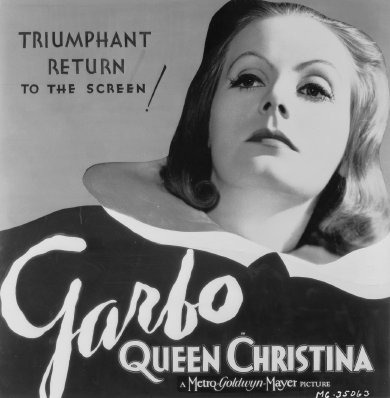
1933 – On this date the Gay classic film Queen Christina was released and starred Greta Garbo in the lead role. The American pre-code historical drama film was directed by Rouben Mamoulian and written by H. M. Harwood and Salka Viertel and based on a story by Salka Viertel and Margaret P. Levino.
The movie is very loosely based on the life of the 17th century Queen Christina of Sweden, who, in the film, falls in love during her reign but has to deal with the political realities of her society. It was billed as Garbo's return to cinema after an eighteen-month hiatus.


1971 – Jared Leto is an American actor, singer, songwriter, and director. After starting his career with television appearances in the early 1990s, Leto achieved recognition for his role as Jordan Catalano on the television series My So-Called Life (1994).
He made his film debut in How to Make an American Quilt (1995) and received first notable critical praise for his performance in Prefontaine (1997). Leto played supporting roles in The Thin Red Line (1998), Fight Club (1998) and American Psycho (2000), as well as the lead role in Urban Legend (1998), and earned critical acclaim after portraying heroin addict Harry Goldfarb in Requiem for a Dream (2000).
He later began focusing increasingly on his music career. Leto is the lead vocalist, multi-instrumentalist and main songwriter for Thirty Seconds to Mars, a band he formed in 1998 in Los Angeles, California, with his older brother Shannon Leto. Their debut album, 30 Seconds to Mars (2002), was released to positive reviews but only to limited success. The band achieved worldwide fame with the release of their second album A Beautiful Lie (2005). The band has sold over 15 million albums worldwide. Leto has also directed music videos, including the MTV Video Music Award–winning "The Kill" (2006), "Kings and Queens" (2009), and "Up in the Air" (2013).
Leto's performance as a transgender woman in Dallas Buyers Club (2013) earned him the Academy Award for Best Supporting Actor, among numerous other accolades. Leto is considered to be a method actor, known for his constant devotion to and research of his roles. He often remains completely in character for the duration of the shooting schedules of his films, even to the point of adversely affecting his health.
Leto is a gay rights activist. In October 2009, he raised money to the campaign against California Proposition 8, created by opponents of same-sex marriage to overturn the California Supreme Court decision that had legalized same-sex marriage. He spoke out in support of LGBT rights group Freedom Action Inclusion Rights (FAIR). In May 2012, he expressed support after hearing that Barack Obama had endorsed same-sex marriage.
Although Leto presents himself as straight in real life, Alexis Arquette - the transgender sister of David Arquette - claimed "I had sex with Jared Leto back when I was presenting as a male," Alexis stated. "And yes, it's not only massive, it's like a Praetorian Guard's helmet."
You can watch him grab and flaunt this "massive" chunk of meat at a 30 Seconds to Mars concert performance in Toronto in 2014 in the gif clip below.



1973 – Reichen Lehmkuhl, (born Richard Allen Lehmkuhl) is an American former reality show winner, model, and occasional actor. A former United States Air Force officer, he is best known for winning season four of the reality game show The Amazing Race with his then-partner Chip Arndt, and for his much publicized 2006 relationship with pop singer Lance Bass.
After Lehmkuhl's parents, a policeman and a nurse, divorced when he was five, his family moved to Norton, Massachusetts, and his mother remarried. Sometime after 2002, he changed his first name legally from Richard to Reichen. Lehmkuhl graduated from the United States Air Force Academy. He has since advocated for gay rights in the military as a spokesperson for Servicemembers Legal Defense Network.
Lehmkuhl was working simultaneously as a physics teacher at Crossroads School for the Arts and Sciences, flight instructor and model in Los Angeles when he was approached by a casting director for The Amazing Race. Lehmkuhl and Chip Arndt were a couple during the competition but have since split. Lehmkuhl moved to Dallas, Texas briefly after his win on The Amazing Race but before all episodes had been broadcast. Reichen's spending habits at that time caused speculation that he had won The Amazing Race — and that he and Arndt had broken up. During the show, the couple was typically described as "Married" in the subtitles that are used to illustrate the relationship between team members (other teams being, for example, "Best Friends" or "Father-Daughter").
Lehmkuhl hosted The Reichen Show on Q Television Network until Q Television ceased operations in May 2006. His autobiography Here's What We'll Say, about his time in the Air Force under the military's commonly called "Don't ask, don't tell" policy, was released by Carroll and Graf on October 28, 2006. The New York Post reported in November 2010 that the book had been adapted into a screenplay. He published a beefcake calendar for several years and has appeared on sitcoms, soap operas, and other reality television shows.
On July 2006, former 'N Sync band member Lance Bass told People Magazine that he is gay and in a "very stable relationship" with Lehmkuhl. The couple broke up in January 2007. Bass said they remained "good friends".
On May 1, 2007, the LGBT-interest television network here! announced that Lehmkuhl had joined the cast for the third season of its original gothic soap opera, Dante's Cove. He plays the role of Trevor, originally described as "a business school graduate who comes to Dante's Cove looking to find himself."
Lehmkuhl also has a jewelry line called Flying Naked composed of flight-themed jewelry made of titanium steel. Items from the collection are being sold from loveandpride.com. A percentage of each sale goes to the Servicemembers Legal Defense Network.
Lehmkuhl starred in My Big Gay Italian Wedding, an off-Broadway production from its opening May 5, 2010 in New York City to July 24, 2010. A percentage of ticket sales promoted legalization of same-sex marriages in the US through Broadway Impact.
LGBT-interest network Logo announced on June 3, 2010, that Lehmkuhl and boyfriend, model Rodiney Santiago had joined the cast of Logo's reality series, The A-List: New York. The low-rated series, frequently described as a "Real Housewives"-style show, was cancelled after two seasons. Since the airing, Lehmkuhl and Santiago are no longer a couple.


1995 – Conner Mertens is an American football placekicker for the Willamette Bearcats. He was the first active college football player to publicly come out about his sexuality; he came out as bisexual.
Mertens grew up in Kennewick in Tri-Cities, Washington, where he was the youngest of four boys in his family. Growing up, he always excelled at sports. He concentrated on athletics after an incident in fifth grade in which classmates teased him for remaining in costume and makeup after a drama competition.
According to Mertens, the environment at Southridge High School was "hostile", as he was surround by a culture of homophobia. He said the Tri-Cities was not the most friendly area toward the LGBT community. In 2012, 63 percent of the area voted against a measure for same-sex marriage that was ultimately approved by the state. Starting with his sophomore year in high school, Mertens was active in Young Life, a national organization that preaches Christianity to youth. After being in trouble in his freshman year, he credited Young Life with turning his life around.
Mertens redshirted and did not play football in his freshman year due to an anterior cruciate ligament (ACL) injury to his left knee from playing soccer. In January 2014, Mertens came out as bisexual, the first active college football player at any level to publicly come out. With his announcement, he was banned from working with Young Life, which he had been certain would be a part of the rest of his life; the organization's "Faith and Conduct Policies" did not allow any LGBT person to be a staff member or volunteer, though they could participate as "recipients of ministry of God's grace and mercy as expressed in Jesus Christ."
He became Willamette's kicker in 2014, when he also received limited opportunities as a punter. In his senior year, Mertens was named the placekicker on the Tri-City Herald All-Area second team. He was also a four-year starter on Southridge's soccer team. Conner is also a member of the Sigma Chi Fraternity.
Mertens is featured in Out to Win, a documentary about LGBT participation in American sports.


14 notes
·
View notes
Text

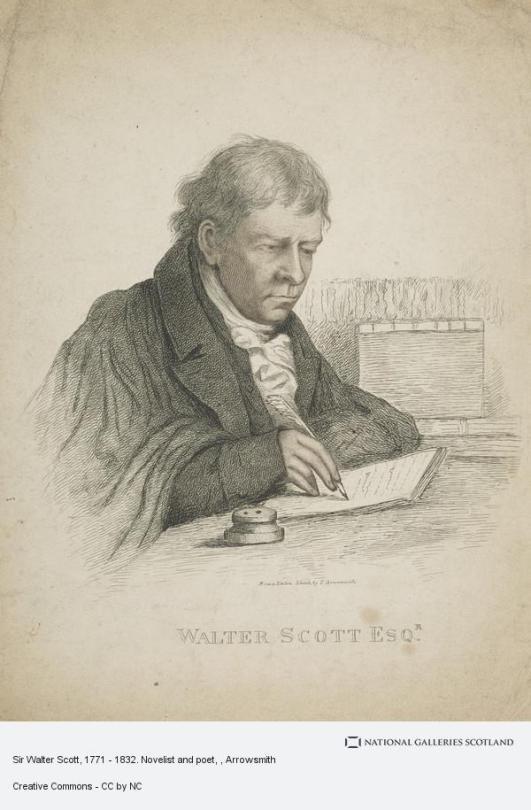
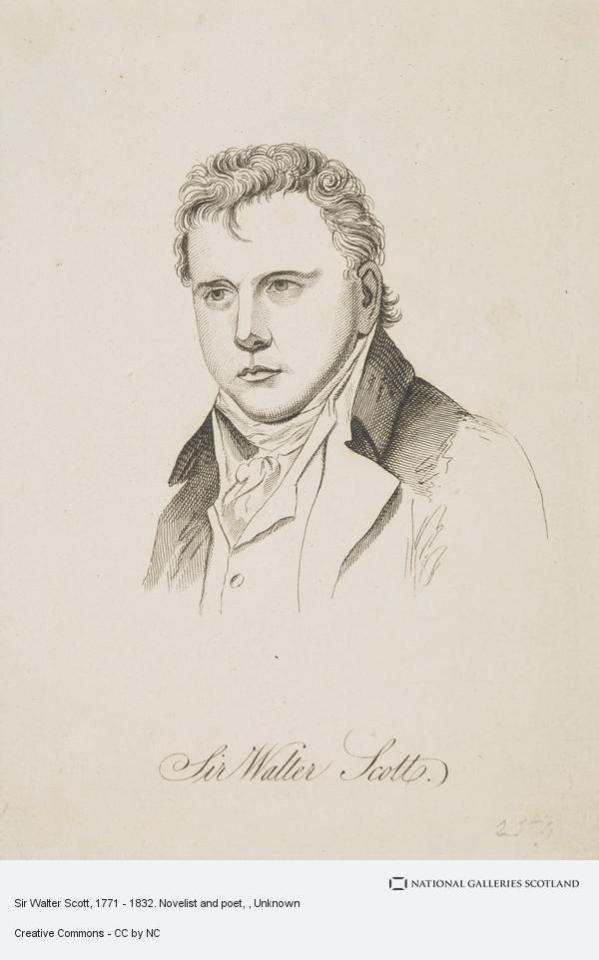
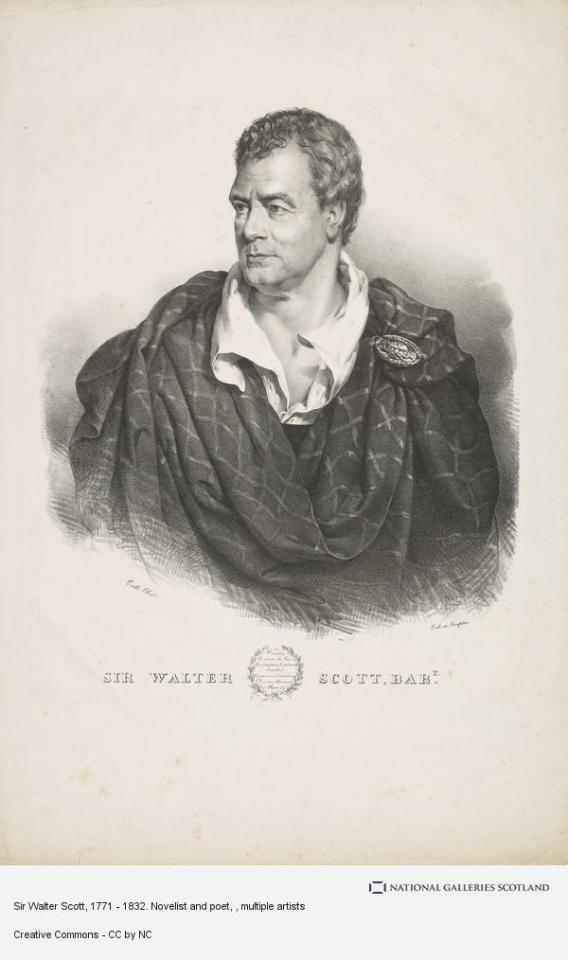
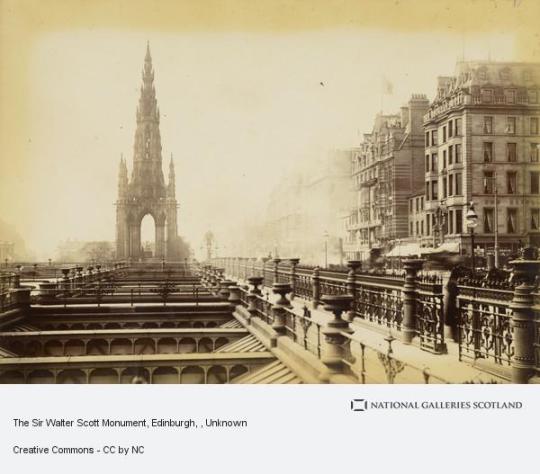
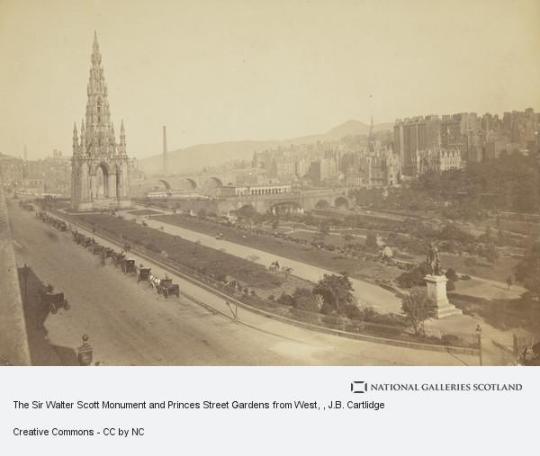
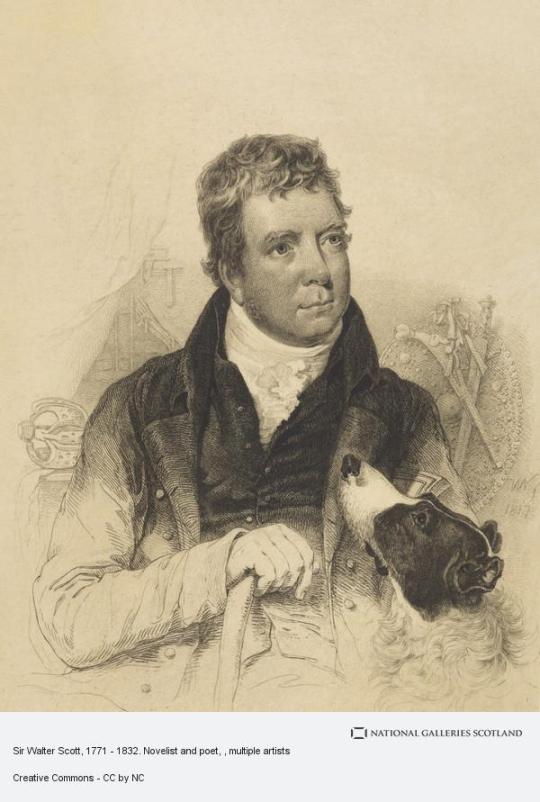
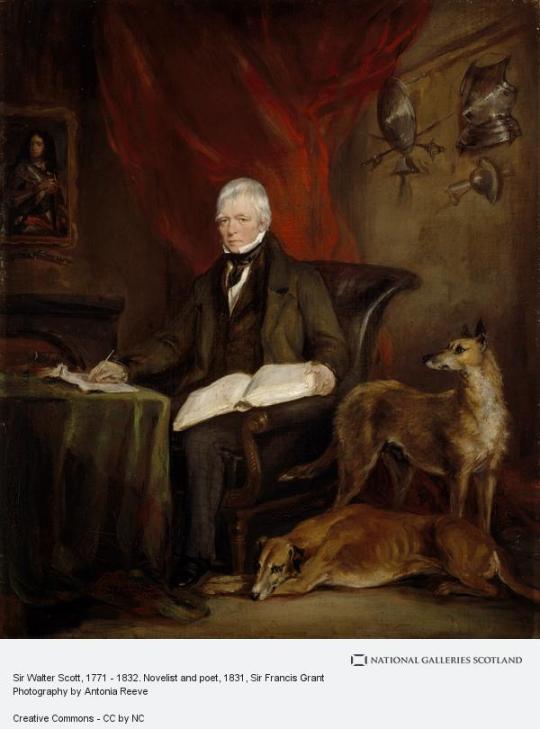
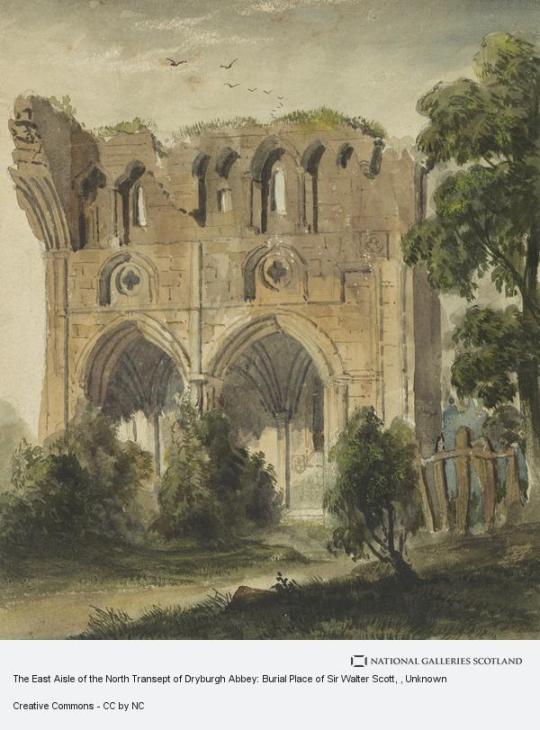
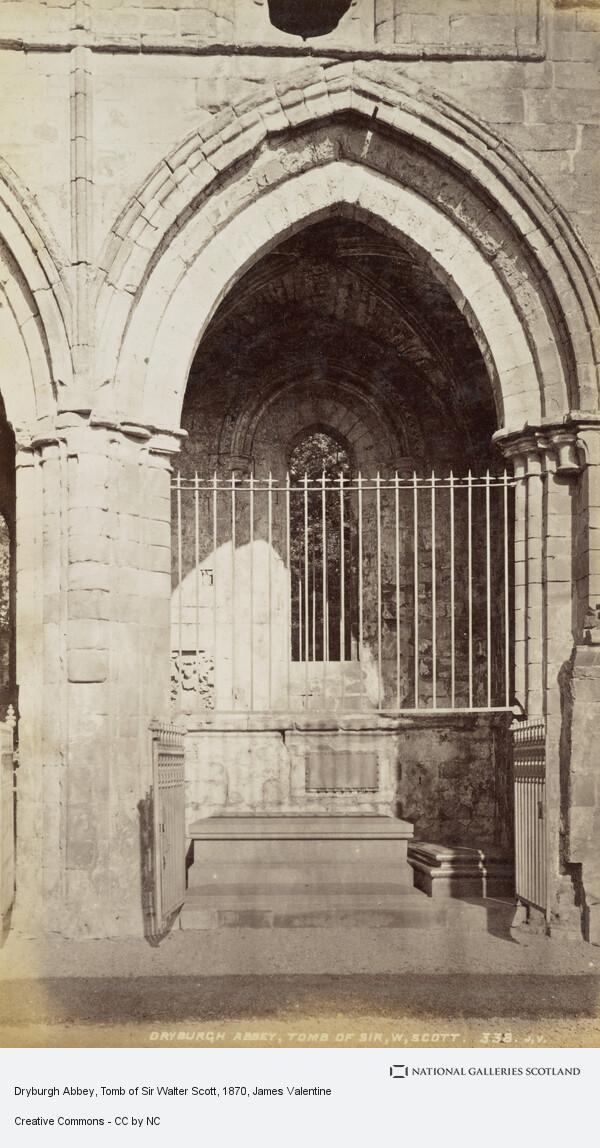

The novelist and poet Sir Walter Scott died aged 61 on September 21s 1832.
Walter Scott was born in Edinburgh in 1771 but was sent to live on his grandfather's farm near Kelso after he contracted poliomyelitis at the age of 18 months. He stayed there until 1777, and it is thought that it during his period of convalescence that he absorbed the historical and literary culture of the Borders, having heard the traditional ballads and legends about the Border heroes and reivers. Scott is best known for his novels such as The Heart of Midlothian, Ivanhoe, Rob Roy, and The Fair Maid of Perth. However, he also published translations, reviewed extensively, and wrote historical tracts. Regarded in his day as one of the greatest writers, Scott's reputation since then has been subject to intense scrutiny and he has been criticised for presenting a mythical, overly romantic image of Scotland.
Below are a few contmporary newspaper accounts of Scott's deathand funeral.
From The Literary Gazette :
At half past one on Friday the 21st, Sir Walter Scott breathed his last, surrounded by all his descen- dants, and apparently almost without a struggle. During some two or three days after his arrival at Abbotsford, he appeared to feel with satisfaction that be was once more at home; was occasionally wheeled, for half an hour, up and down the library, armoury, or garden ; and even once or twice listened with apparent interest to a page of the Old Testament, or a favourite passage in Crabbe or Wordsworth ; but after this be fell rapidly into the same stupor that had hung over bim while he remained in London, and for full six weeks there had occurred hardly an interval of any thing approaching to collectedness. It was well that the curtain dropped when it did on a scene from which hope had all along been excluded.
From The Edinburgh Courant :
Wednesday, the honoured remains of Sir Walter Scott were consigned to the tomb, amid the unfeigned regret of thousands. Never perhaps was the esteem in which this truly great man was held more conspicuously displayed than on this melancholy occasion. We understand that cards had been issued to nearly 300 persons, who almost all attended, it being deemed an honour to be present at the funeral obsequies of so distinguished a character. One o’clock was the hour fixed on for the time of meeting, and for about an hour afterwards carriages of different sorts, and gentlemen on horseback, continued to arrive from Edinburgh, Peebles, Selkirk, Galashiels, Melrose, Jedburgh, and other parts of the surrounding country. The company having partaken of refreshments, adjourned to the library, where they heard an eloquent and affecting prayer from Principal Baird ; and a little after two o’clock the melancholy procession, consisting of carriages, numerous other vehicles, and horsemen, began to move from Abbotsford, and proceeded through the towns of Darnick and Melrose, and by the Fly Bridge to Dryburgh Abbey. As the long funeral train passed through the villages and hamlets, one universal feeling of deep sorrow pervaded all classes. Groups of people were assembled at different parts of the road, and on elevated points from which a view could be obtained. Most of them were in mourning, and many standing uncovered.
The decency, propriety and reverential silence which was observed gave a very impressive character to the scene. In passing through the towns, those respectful observances were still more striking. The streets at Melrose were lined on both sides with the inhabitants in mourning and uncovered. The shops of this and other towns were shut ; the sign boards were covered with black ; the aged and the lame came forth to pay their last tribute to departed worth ; and along the many miles of picturesque country which the procession had to traverse, the ensigns of sorrow were everywhere displayed ; these were the unbought and voluntary testimonies to the private virutes of the diseased from those among whom he had lived, and by whom he was best known. At Dryburgh Abbey the body, on being taken from the hearse, was borne by his own domestics to the grave, they having specially requested that no foreign hand should be allowed to touch the remains of a master so honoured and so beloved. The pall-bearers were :
Head. Major Sir Walter Scott. Right. Left. Chs. Scott Esq., J. G. Lockhart Esq., Second son of deceased. Son-in-law of deooased. Chs. Scott Esq., Janii’S Scott, Esq. Nesbitt,Cousin. Nesbitt, cousin. Wm. Scott, Esq., Robert Rutherford, Esq. of Raeburn, Cousin, W. S., Cousin, Col. Russell, Hugh Scott Esq. of Ashieseel, Cousin, of Harden. Foot. Wm. Keilli, Esq., of Edinburgh.
A grandson of Sir Walter Scott, a son of Mr Lockart, was also present. Sixty-two carriages, phaetons, and gigs followed the hearse – the black plumes of the latter and the cloaks of the mutes on horseback leading the procession, as it wound through picturesque roads and up and down the many hills on the route from Abbotsford to Dryburgh, were particularly striking; but when the body was taken out of the hearse at the great tree close to Sir David Erskine’s house, and time given for the party to collect – when the pall-bearers had taken their places, and the bearers moved on with the body, all with one consent uncovered – the Rev. Mr Williams, in his white surplice, leaning on the arm of Mr Robert Cadell, taking his place immeditaely after the chief mourner – the dark mass of friends who had left their carriages closing up behind ; When all these preliminaries were adjusted, and the mournful ceremony proceeded towards the Abbey, the whole effect was peculiarly impressive – the beauty of the scenery – the fine old ruin – the serene, though gloomy aspect of the heavens – the associations connected in no smal degree with the distinguished man, whose remains were about to be consigned to their places of rest, rendered the whole one of the most striking scenes it has been our lot to be an eye witness of. Before the body was committed to the earth, the English Burial Service was read by the Rev. J. Williams, rector of the Edinburgh Academy. A little past five in the afternoon, the last offices were performed. The effect of the scene was also at this time impressive, far beyond what any words can convey, and in considering the genius and intellectual powers of the deceased ; his wit, his eloquence, his fancy, we could not help thinking of his own beautiful words… “They sleep with him, who sleeps below.” The spot in which Sir Walter Scott is laid is in the north wing of the splendid ruin of Dryburgh Abbey, now, alas ! containing a more splendid ruin than itself. Here is laid the body of Lady Scott, and also that of his uncle. The situation is secluded and romantic, and quite congenial to all the ideas of the deceased. Among those present around the grave at the time of the interment, were Lord Melville and Napier, Sir W. Rae, Sir Thomas Dick Lauder, Sir John Pringle, Sir John Hay, M. P., Sir David Erskine, Colonel O’Reilly, Colonel Scott, Major Riddel, Mr. Pringle of Whitbank, Mr. Pringle of Clifton, Mr Richardson, solicitor, London, Mr. Ogilvy of Ches- ter, M. Monypenny, W. S., Mr. Ihomas Thomson, advocate, Mr. W. Clerk, advocate, Mr. Urquhart, advocate, Mr. Smith, banker, Edinburgh, Mr. Bruoe of Langlea, Mr. Sprott of Jerviswood, tylr Scott of Simon, Mr. Fairholm of Chapel, Dr. Clarkson, Mr. R.Cadell, Edinburgh, Rev. Dr. Dickson. Edin- burgh, Mr. Reid, bis Majesty’s architect, & co.
A great number of respectable persons went from Edinburgh, to be present at the funeral without having received cards of invitation to attend – from a spontaneous desire to show all the respect they could to the memory of the illustrious deceased.
Whatever you think of Scott he did in the 19th century what the likes of Braveheart and Outlander has done more recently, and that is attract people to savour what Scotland has to offer.
TheNational Galleries of Scotland have over a thousand entries pertaining to Scott in some way or another, Iperused them all to choose a number to post.
15 notes
·
View notes
Text
A haunted house is where the Armor is.
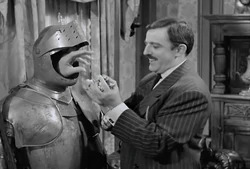

When it comes to spooky old houses, more often then not, you’ll see a suit of armor on display. Both the Munsters and Addams family found these great pieces of interior decor, and sometimes incorporated them into the plot. In one of the episodes, Uncle Fester got very upset, when Gomez and Morticia wanted to donate “his” suit of Armor, for charity. I wouldn’t be surprised if part of what made these suits of Armor popular, had to do with Charles Addam’s love of Armor. The cartoonist who did so much to popular horror media, and defined for many what a haunted house looks like, owned a suit himself, and allowed himself to be photoed wearing the helmet.

Disney understood how a suit of Armor was an essential piece of haunted house decor, so of course a suit was included in the endless hallway of the Haunted Mansion.

So, why this fascination with suits of armor, in modern times? Much of this has to do with Sir Walter Scott.(1771-1832). He was quite the celebrity during his age, and his romanticized novels of knights in Armor, led to many people who wanted to decorate their homes with these symbols of the past. If you couldn’t find an entire suit of Armor, you could have one created, sometimes using original parts.
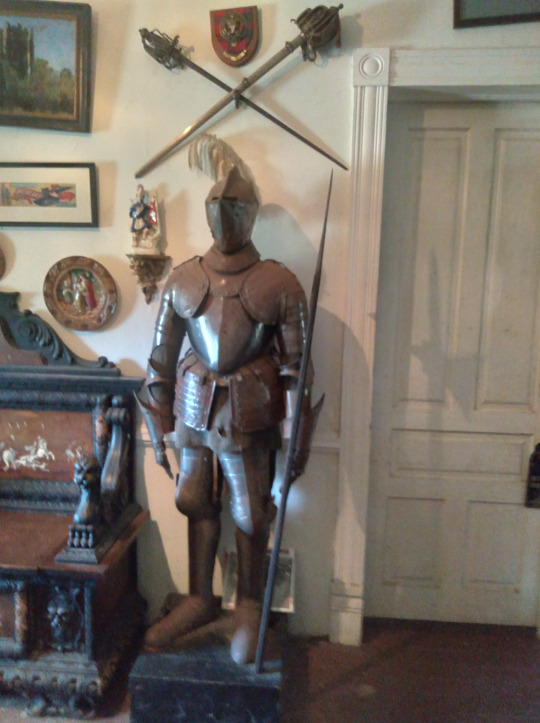
I’ve had this suit of Armor since I was a teenager. The Armor was originally a pikes-man's armor, circa 1590. However, to make this a complete suit of armor, a closed helmet from the same period was added,, and new legs were added, since a pikesman armor wouldn’t have had them. Although most of this suit dates from 1590, the legs were probably done around 1860.
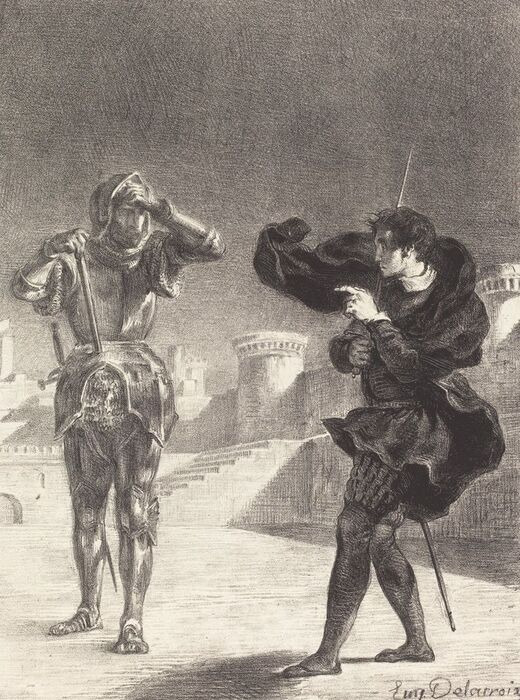
As far as a suit of armor featuring prominently in a haunted house, an early example of that might be “The Canterville Ghost” (1887) by Oscar Wilde. The story is about an American family who moved to a castle haunted by the ghost of a dead English nobleman, who killed his wife and was then walled in and starved to death by his wife's brothers. At one point of the story, the ghost attempts to scare off the family, by wearing his suit of armor. The Story was extremely popular, and I’m certain it led to the association with armor and spooky old houses to this day.

Closer to the present time, we have Scooby Doo keeping the idea of spooky armor alive in younger viewers, The show “Scooby Doo, where are you?” premiered in 1969, the same year Disneyland’s Haunted Mansion opened. The very first episode “What a night for a Knight” was an episode about a haunted suit of Armor. I have long been a fan of Suits of Armor, both the actual items, and the place the have in pop horror media.
89 notes
·
View notes
Text
Surprisingly, he chooses a Rob Roy cocktail and not a Bobbie Burns, they are two examples that bear the names of Scottish figures. Rob Roy was the nickname of Robert McGregor (1671-1734), immortalised by Sir Walter Scott (1771-1832) in the novel of the same name, while Robert Burns is the country's national poet.
However, the name Bobbie Burns has become the standard reference for the cocktail, the drink, best served with some Scottish shortbread and a collection of the poet's works, was more appropriate for Burns Night.
The Rob Roy is a drink and quite simply, is a Manhattan. Whereas a Manhattan includes bourbon, a Rob Roy feature whisky. His preference was to choose his blended whisky 🥃
The Rob Roy is a cocktail 🍸 imitates the reddish colour of Rob Roy's hair, created in 1894 by a bartender at the Waldorf Astoria in Manhattan, New York City.

The drink was named in honour of the premiere of Rob Roy, an operetta by composer Reginald De Koven and lyricist Harry B. Smith, loosely based upon the life of Scottish folk hero Robert Roy MacGregor, better known as Rob Roy, and the Sir Walter Scott novel about him.
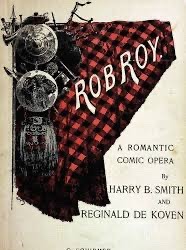
I begin to tire of my gaieties and the late hours and constant feasting disagree with me. I wish for a sheep’s head and a whisky toddy against all the French cookery and Champagne in the world.’
Sir Walter Scott
7 notes
·
View notes
Photo

#WordyWednesday
Leaf: The basic unit of a codex book, i.e., a piece of paper with a page on either side. In most bindings, a leaf is made by folding a sheet of paper one or more times, producing another pair of leaves with each fold. Two leaves that are connected through the fold are conjugate with one another; if a leaf’s conjugate has been removed, it will often leave a visible stub in a book. Single leaves (especially from very old books) are often sold individually.
Image: Scott, Walter, 1771-1832. Waverley. New York: Printed for the members of the Limited Editions Club, 1961. PR5322 .W4 1961
(via Jobbing — Lithography · Rare Books: A Glossary · Special Collections and Archives)
#mizzou#university of missouri#libraries#wordy wednesday#wordywednesday#john henry#special collections#specialcollections#rare books#rarebooks#bookhistory
3 notes
·
View notes
Text
a list of all the different people prominent in Mormonism named Joseph Smith for the edification of some and the confusion of others.
Joseph Smith Sr. (1771-1840): the original Joseph Smith, but not the most famous one. Father of the prophet (and numerous other children). Was the first person to hold the office of Presiding Patriarch of the Church, a position inherited after his death by his oldest son Hyrum.
Joseph Smith Jr. (1805-1844): the founder of Mormonism, the big Kahuna, etc.
Joseph Smith III (1832-1914): oldest surviving son of Joseph Jr. and Emma Hale Smith, leader of the anti-polygamist breakaway Reorganized LDS Church (RLDS) from 1860 until his death.
Joseph F. Smith (1838-1918): son of Hyrum and Mary Fielding Smith (his full legal name was Joseph Fielding Smith, Sr., but the bolded version of his name is what he’s referred to by historians), nephew of Joseph Jr., first cousin and longtime theological rival of Joseph III. Served as an LDS Apostle starting in 1866 and as prophet from 1901 to his death.
Joseph Fielding Smith (1876-1972): (Full legal name Joseph Fielding Smith, Jr.) Son of Joseph F. and the second of his six wives, Julina Lambson Smith. Made an apostle in 1910 by his father, served as Church Historian from 1921-1970, served briefly as prophet from 1970-1972, has the distinction of being the oldest person to be made prophet at age 93.
Joseph Fielding Smith II (1899-1964): He is sometimes erroneously called Joseph Fielding Smith III, but as he wasn’t a direct descendant of Joseph Fielding Jr., that isn’t correct. Joseph Fielding II was the grandson of Joseph F. through his oldest son Hyrum Mack Smith, Joseph Fielding Jr.’s half-brother. Like several previous members of the Smith family, he was ordained as Patriarch in 1942, but forced to resign four years later after the Apostles discovered that he had had several extramarital affairs with other men, which was not made public.
#there are a couple other Joseph Smiths but they werent prominent in any way like Joseph Jr. and Emma had another Joseph before Joseph III#who died in infancy and Joseph F. had another son named Joseph with a different middle na#*middle name#mormonposting tag
5 notes
·
View notes
Text
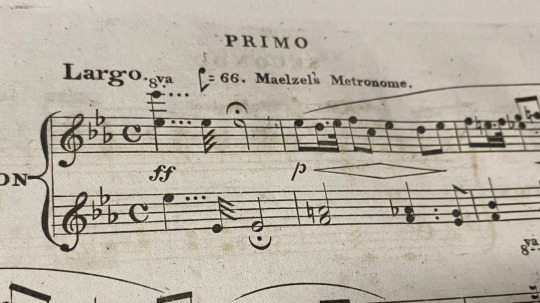
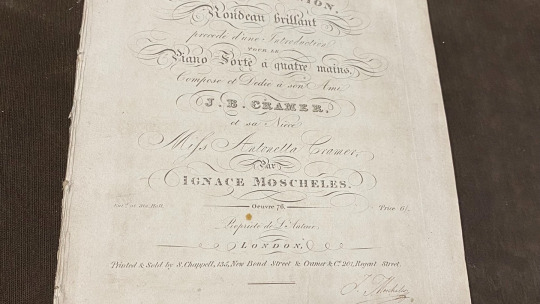


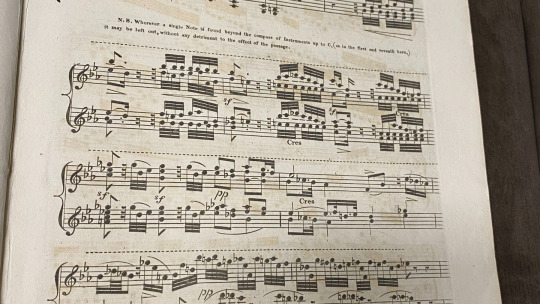
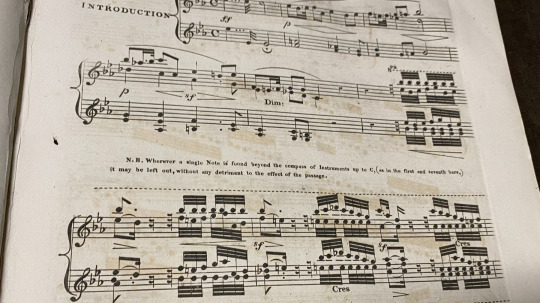
OTD in Music History: Composer, pianist, and pedagogue Ignaz Moscheles (1794 - 1870) dies in Leipzig.
Although Moscheles is far from a household name today -- even in many "classical" music circles -- he played a number of important roles in the course of 19th Century musical history, and he is certainly one of the most important "forgotten" 19th Century figures.
Student of Muzio Clementi (1752 - 1832)... good friend (and sometimes competitor) to prominent virtuoso pianists Johann Baptist Cramer (1771 - 1858), Johann Nepomuk Hummel (1778 - 1837), and Friedrich Kalkbrenner (1785 - 1849)... trusted helper to Ludwig van Beethoven (1770 - 1827), who was so impressed with the young man's abilities that he actually entrusted him with the preparation of the piano-vocal version of his only opera, "Fidelio"... music teacher to Felix Mendelssohn (1809 - 1847) and Arthur Sullivan (1842 - 1900)... close colleague to Robert Schumann (1810 - 1856) and Franz Liszt (1811 - 1886)... Moscheles knew everyone, and everyone knew Moscheles...
PICTURED: An original c. 1828 copy of sheet music for one of Moscheles's virtuoso piano solos -- in this case, a four-hand two-piano arrangement of a popular song, which he dedicated to Cramer.
Moscheles has also signed this copy on the front cover. This was known as a "control mark," and it was actually a somewhat common device deployed by composers at the end of the 18th Century and in the early 19th Century (i.e., in the days before a functional international copyright system came into existence) in an effort to help ensure that printed copies in circulation were authentic, and not pirated.
The first photo in this series is interesting in that it illustrates a very early metronomic tempo marking: "[eighth note symbol] = 66 Maelzel's Metronome." As this rather unusual terminology suggests, in 1828, the metronome itself was still a new and novel device; Johann Maelzel (1772 - 1838) had only patented the first modern metronome 12 years earlier, in 1816.
The last photo in this photo set also contains another interesting note -- an instruction reassuring the player that they should feel free to disregard any notes indicated in the score that are "found beyond the compass of [their] instrument.”
By 1828, the keyboard element of the grand piano as we know it today had *largely* come into being -- at least in very broad strokes. (Substantial further refinements were still to come, of course, especially regarding the construction of the soundboard and the action.) But just a generation earlier, the pianoforte was still very much an evolving instrument, and the harpischord was still quite popular; hence Moscheles’s keen awareness that many of the keyboard instruments sitting in middle-class parlors across Europe would be earlier models that didn't have all of the latest bells and whistles (or keys) as the cutting-edge models for which Moscheles was composing his music. This instruction is a direct nod to that practical reality.
#Ignaz Moscheles#Moscheles#classical music#music history#composer#piano#virtuoso#pianist#Conservatory#Polonaise#classical composer#classical#Sonata#Concerto#Concert#music#music teacher#teacher#pedagogue#Prelude#Allegro#Symphony#Ballade#Romance#Serenade#Der Tanz. Characterstück#Toccata#Pastorale#Cadenza#duet
3 notes
·
View notes
Text
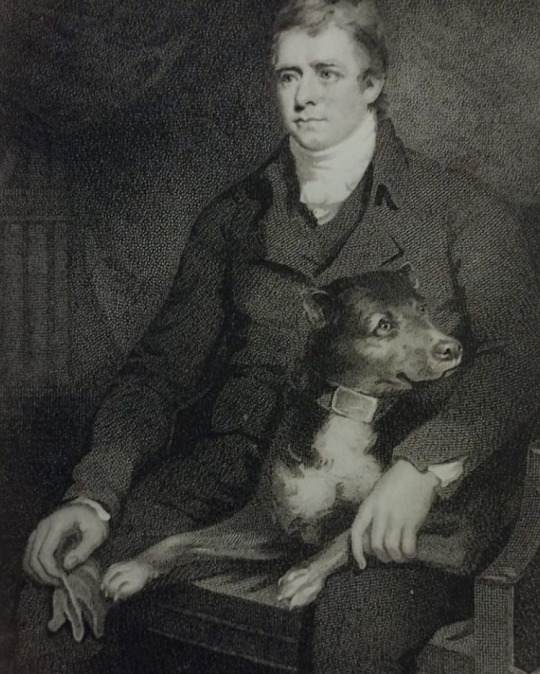
#repost @museumoffreemasonry. Portrait of Sir Walter Scott (United Kingdom, 1771-1832) with his dog, attribution unknown.
#sir walter scott#perro#dog#chien#illustration#hund#hond#man's best friend#amor perruno#amour de chien#toutou#toutoudamour#dogs in art#animals in art#british art
0 notes
Photo
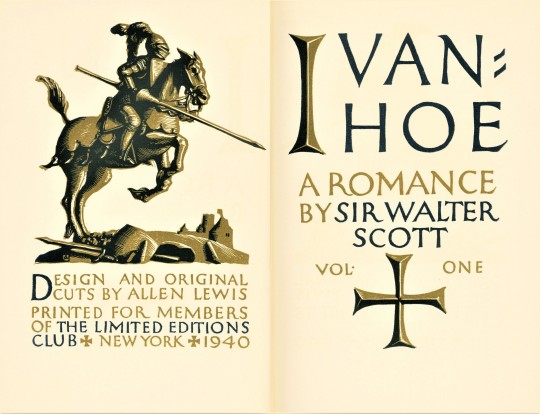
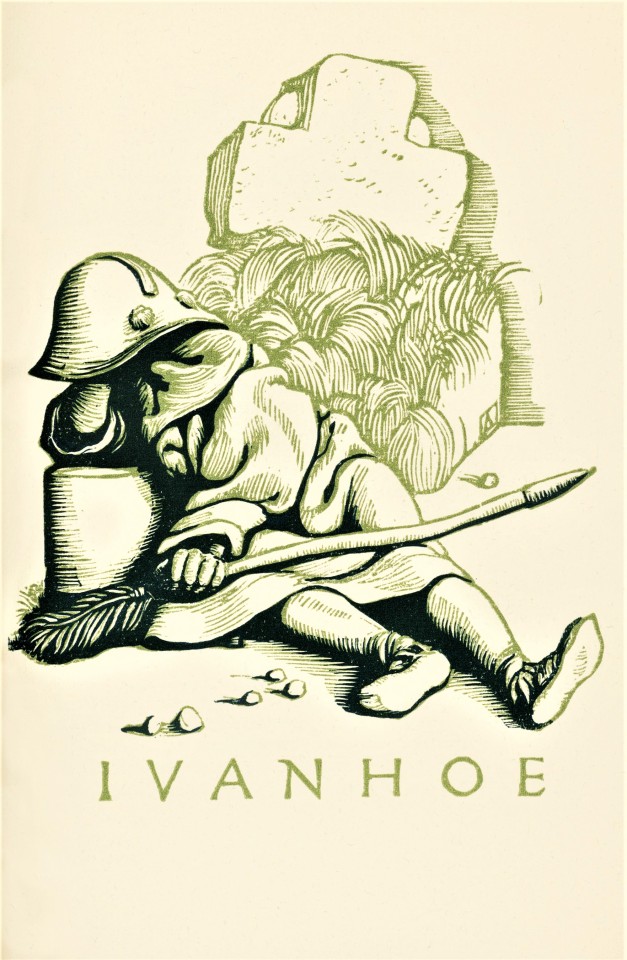

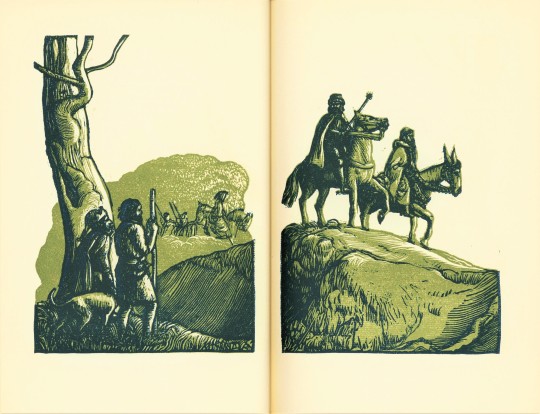


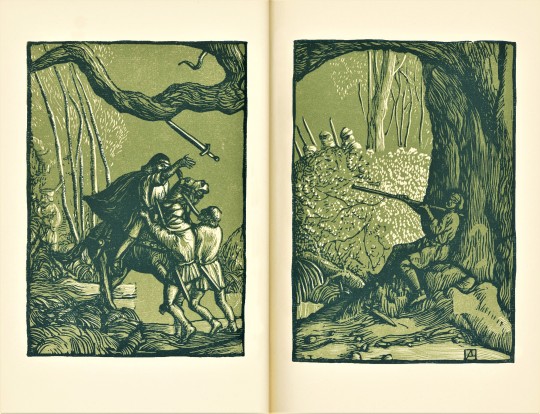
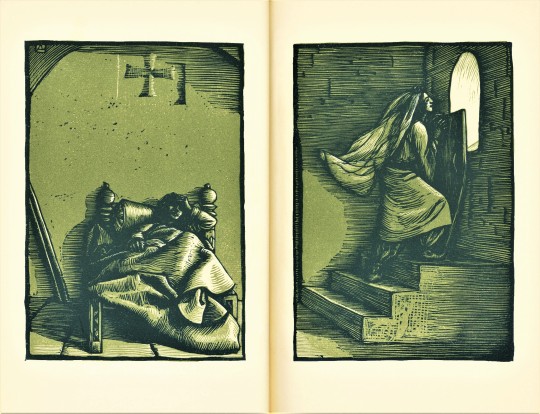
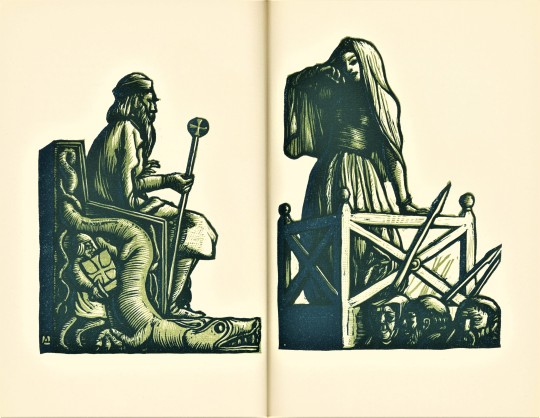
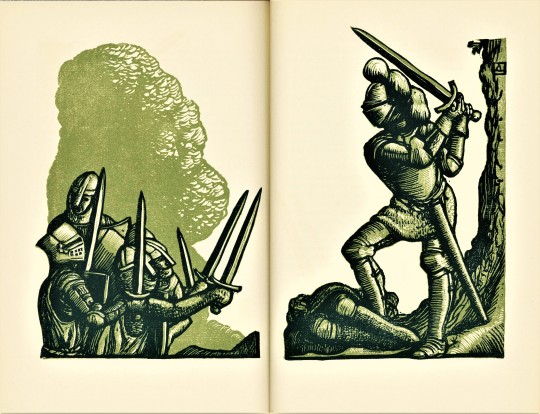
It’s Fine Press Friday!
We are excited to share Ivanhoe, a romance by Scottish historiacal novelist and poet Sir Walter Scott (1771-1832), illustrated with linocuts by American artist and illustrator, Arthur Allen Lewis (1873-1957) published in two volumes by the Limited Editions Club, New York, in 1940. Ivanhoe is a historical novel that was first published in three volumes by Archibald Constable (1774-1827), Edinburgh, and Hurst, Robinson and Co., London, in 1819.
The perceptions of some popular historical figures have been shaped by Ivanhoe, like King Richard the Lionheart, Prince John, and most famously Robin Hood.
Allen Lewis’s illustrations are funny and energetic. He strategically created interaction across the the page-spread by separating the illustrations with the gutter. The characters awkwardly navigate the space of the page with the effect of them running, falling, jabbing across the book space. The space also may suggest a greater distance, where some characters are just out of reach.
This edition was planned by Allen Lewis who also cut the initials that begin each chapter and the linocut illustrations in two colors. The book was printed at the Marchbanks Press in New York. The type is Monotype Kennerly. The rag paper was produced by Worthy Paper Company, made specially for this edition, and the book was bound by the Russell-Rutter Company in New York. The book boards are wrapped with a silver pyroxylin cloth that is embossed in a chain-mail design. The whole book is cohesive and beautifully designed. It is definitely a favorite of mine.
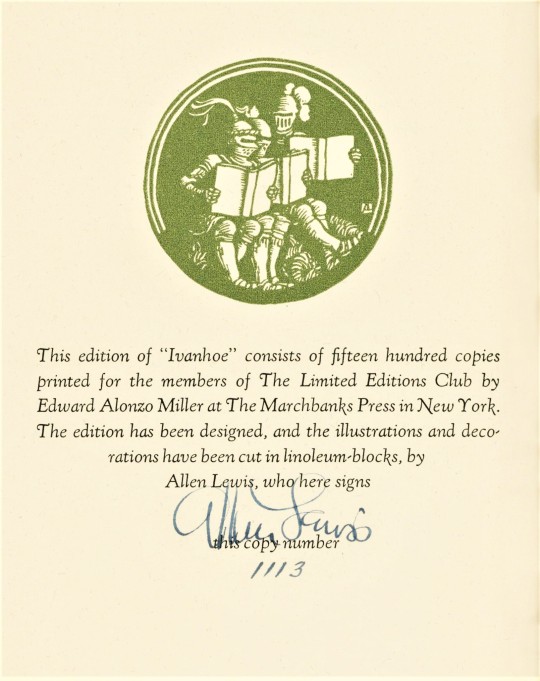
Look at how cute! Knights reading books!

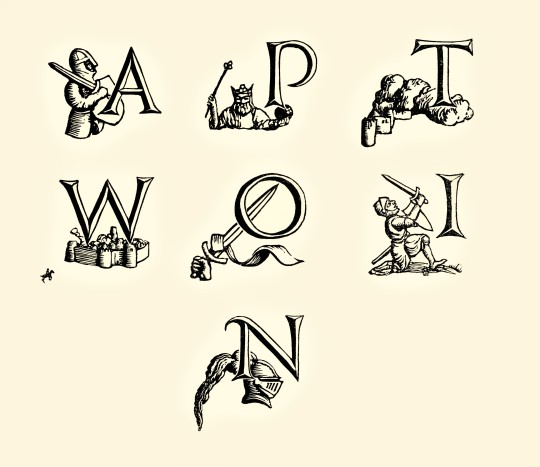

View more Limited Edition Club posts.
View more Fine Press Friday posts.
Teddy, Special Collections Graduate Intern
#Fine Press Friday#Limited Editions Club#lec#linocuts#Fine press books#Arthur Allen Lewis#Allen Lewis#Sir Walter Scott#Ivanhoe#Linoleum-cuts#Monotype Kennerly#Marchbanks Press#worthy paper company#chainmail#knights#historical romance novel
128 notes
·
View notes
Quote
Ein Leben ohne Frohsinn ist eine Lampe ohne Öl.
Walter Scott, 1771-1832, brit. Schriftsteller
0 notes
Text
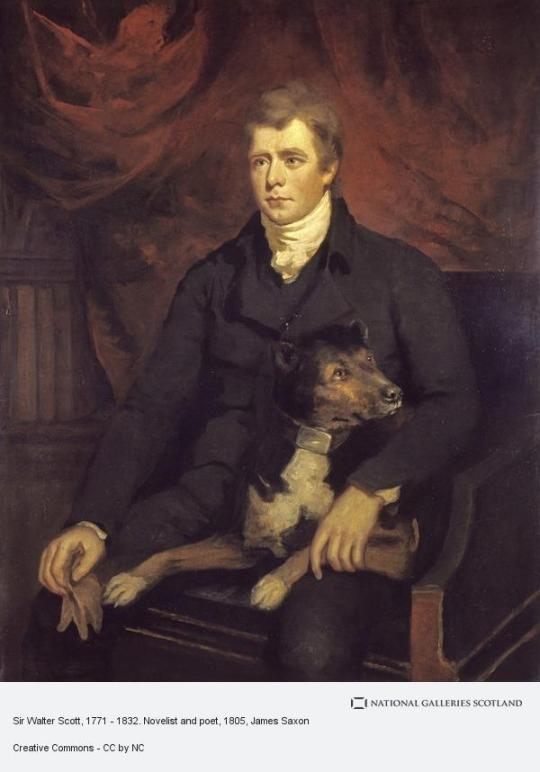
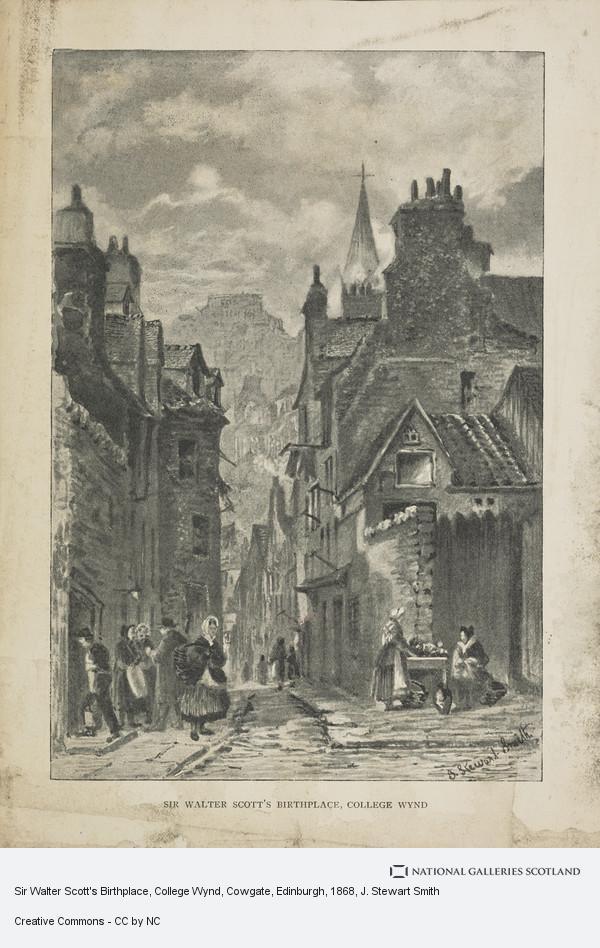
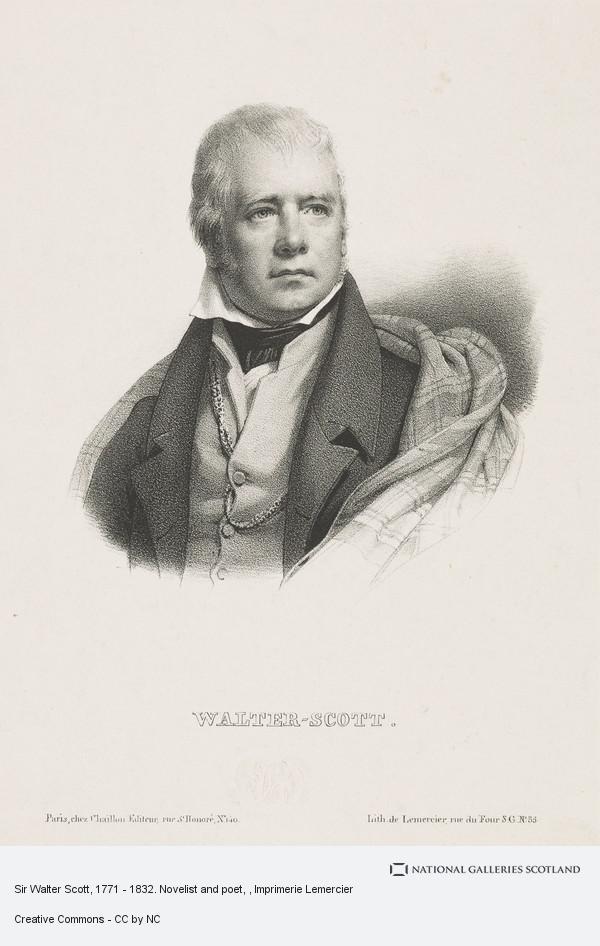
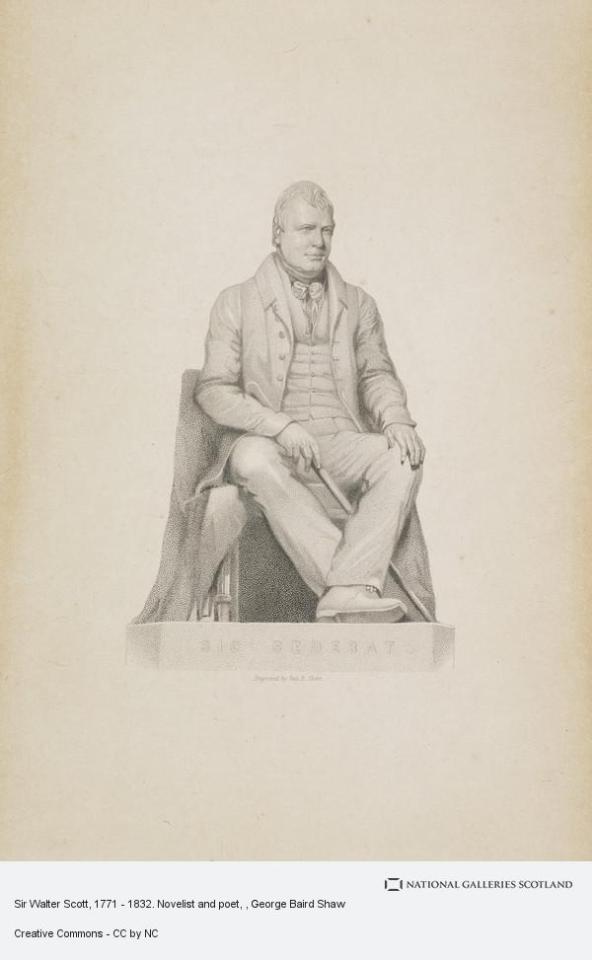
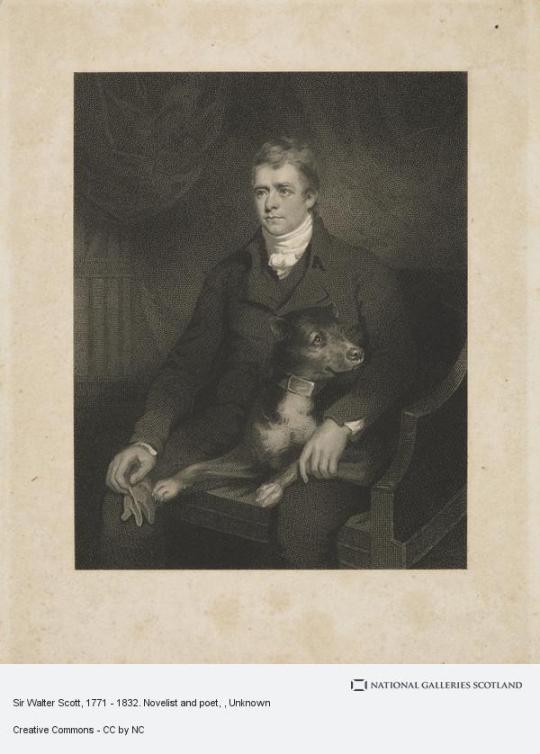
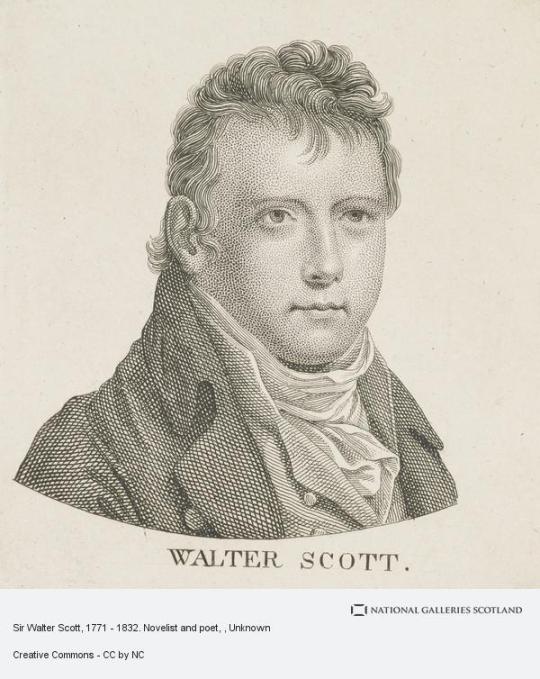
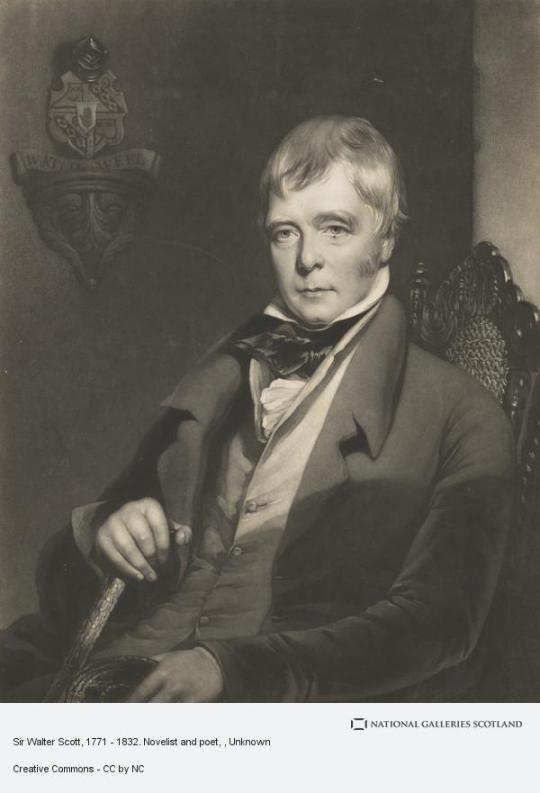


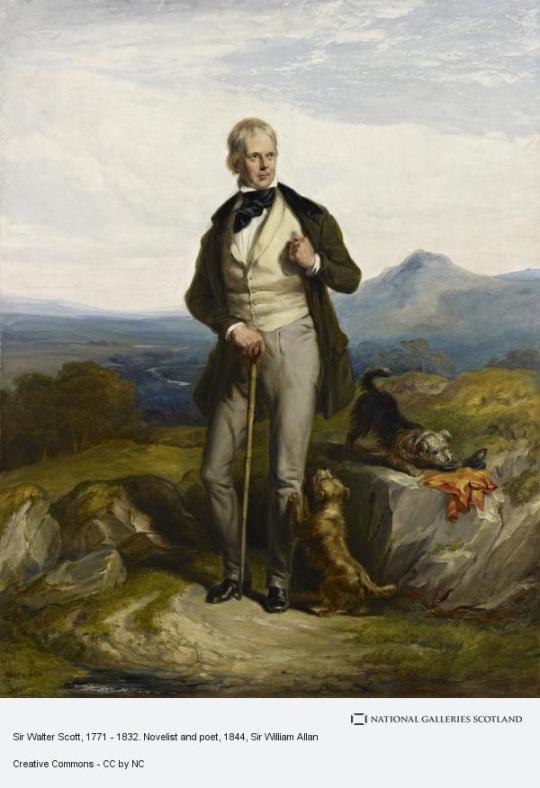
On August 15th 1771 saw the birth Sir Walter Scott the poet and novelist.
Born in a small third floor flat in College Wynd in Edinburgh’s Old Town, Walter was the ninth child of Anne Rutherford and Walter Scott, a solicitor and member of the private Scottish society known as the Writers of the Signet, so called for their entitlement to use the Scottish King’s seal – known as the signet – when drawing up legal documents.
Whilst the Scott’s home near the University was a popular area for lecturers and professionals like Scott’s father to live, in reality the small, overcrowded alleyway saw little natural light and clean air and suffered from a lack of proper sanitation. Unsurprisingly perhaps then, that six of Anne and Walter’s children died in infancy and the young Walter (or ‘Wattie’ as he was affectionately known) when he was just two years old, Scott became afflicted with polio. Though he survived the illness, his right leg would be unusable for the rest of his life.
Writing was not Scott’s first career choice. He studied law, which he practiced after completing his studies. He later served as sheriff-deputy of his county, for our US friends a sheriff in this instance doesn't have a star and six shooters but was a judge in the Scotlands courts, a term still used to this day.
Scott’s narrative poems about the stirring events in Scottish and medieval history were immensely popular in the nineteenth century, and in fiction he created the genre of the historical novel. It's no exaggeration to say during his lifetime he was the most famous author in the world.
Raised on the old Border tales and ballads that would later influence his historical novels, Scott was a clever and active child. Unfortunately, poor health interrupted his studies at Edinburgh University, and after being apprenticed to his father's legal firm for a year, Scott decided to study law. While visiting the Highlands on business in 1786 and 1787, he met not only Alexander Stewart of Invernahyle (who once fought a duel with Rob Roy MacGregor) but also the famous Scottish poet Robert Burns.
After his first love broke his heart by marrying another man, Scott married a Frenchwoman, Charlotte Charpentier, on Christmas Day, 1797, after a whirlwind romance. They remained happily married until her death in 1826.
Scott began writing poetry at an early age, and so distinguished himself in this that he was offered the Poet Laureateship in 1813, which he turned down. He published his first novel, "Waverley," in 1814, and it quickly became one of the most successful English language novels ever published. Scott chiefly concentrated on novels in his latter years, putting aside his poetry to publish "Ivanhoe" in 1819 and "Rob Roy" in 1817.
After suffering a stroke and apoplectic paralysis in 1831, Scott died on 21 September 1832.
Even those who have not read any of Walter Scott's works, almost everyone in Edinburgh, if not Scotland, knows of him due to the monument built in his memory, the biggest in the world dedicated to a writer, The Sir Walter Scott Monument dominates the the southside of Princess Streey.
Sitting proudly at the base of the monument is Sir Walter himself, carved in Carrara marble by Sir John Steell. This monumental statue, fashioned from a single piece of marble weighing 30 tons, took the sculptor six years to complete. It features Scott and his beloved hound Maida.
The Foundation stone was laid on the 15th August 1840 and was completed in Autumn 1844. It is 200 feet 6 inches (61.1metres) high, is made of Binny sand-stone from West Lothian, and cost just over £16,154 (approx. £712,000 today). There are 287 steps to the top where there are magnificent views of Edinburgh and beyond.
There are 64 statues on the monument, mostly characters from Scott's novels, with some figures from Scottish history.
You can find a list of the characters here https://sites.scran.ac.uk/.../hisnovels/hisnovels_list.htm
11 notes
·
View notes
Text
Events 2.12
1096 – Pope Urban II confirms the foundation of the abbey of La Roë under Robert of Arbrissel as a community of canons regular.
1404 – The Italian professor Galeazzo di Santa Sophie performed the first post-mortem autopsy for the purposes of teaching and demonstration at the Heiligen–Geist Spital in Vienna.
1429 – English forces under Sir John Fastolf defend a supply convoy carrying rations to the army besieging Orléans in the Battle of the Herrings.
1502 – Isabella I issues an edict outlawing Islam in the Crown of Castile, forcing virtually all her Muslim subjects to convert to Christianity.
1502 – Vasco da Gama sets sail with 15 ships and 800 men from Lisbon, Portugal on his second voyage to India.
1541 – Santiago, Chile is founded by Pedro de Valdivia.
1593 – Japanese invasion of Korea: Approximately 3,000 Joseon defenders led by general Kwon Yul successfully repel more than 30,000 Japanese forces in the Siege of Haengju.
1689 – The Convention Parliament declares that the flight to France in 1688 by James II, the last Roman Catholic British monarch, constitutes an abdication.
1733 – Georgia Day: Englishman James Oglethorpe founds Georgia, the 13th colony of the Thirteen Colonies, by settling at Savannah.
1771 – Gustav III becomes the King of Sweden.
1817 – An Argentine/Chilean patriotic army, after crossing the Andes, defeats Spanish troops at the Battle of Chacabuco.
1818 – Bernardo O'Higgins formally approves the Chilean Declaration of Independence near Concepción, Chile.
1825 – The Creek cede the last of their lands in Georgia to the United States government by the Treaty of Indian Springs, and migrate west.
1832 – Ecuador annexes the Galápagos Islands.
1889 – Antonín Dvořák's Jakobín is premiered at National Theater in Prague.
1894 – Anarchist Émile Henry hurls a bomb into the Cafe Terminus in Paris, killing one person and wounding 20.
1909 – The National Association for the Advancement of Colored People (NAACP) is founded.
1909 – New Zealand's worst maritime disaster of the 20th century happens when the SS Penguin, an inter-island ferry, sinks and explodes at the entrance to Wellington Harbour.
1912 – The Xuantong Emperor, the last Emperor of China, abdicates.
1919 – The Second Regional Congress of Peasants, Workers and Insurgents is held by the Makhnovshchina at Huliaipole.
1921 – Bolsheviks launch a revolt in Georgia as a preliminary to the Red Army invasion of Georgia.
1935 – USS Macon, one of the two largest helium-filled airships ever created, crashes into the Pacific Ocean off the coast of California and sinks.
1945 – A devastating tornado outbreak in Mississippi and Alabama kills 45 people and injures 427 others.
1946 – World War II: Operation Deadlight ends after scuttling 121 of 154 captured U-boats.
1946 – African American United States Army veteran Isaac Woodard is severely beaten by a South Carolina police officer to the point where he loses his vision in both eyes. The incident later galvanizes the civil rights movement and partially inspires Orson Welles' film Touch of Evil.
1947 – The largest observed iron meteorite until that time creates an impact crater in Sikhote-Alin, in the Soviet Union.
1947 – Christian Dior unveils a "New Look", helping Paris regain its position as the capital of the fashion world.
0 notes
Text
January's crew - Page 17
,,,
[1757] {In the style of Dave Matson Jr.}
[1758] {In the style of Dave Matson Jr.}
[1759] [¯\_(ツ)_/¯ cousins and siblings]
[1760] [¯\_(ツ)_/¯ newborn babies]
[1761] {In the style of Dave Matson Jr.}
[1762] {In the style of Dave Matson Jr.}
[1763] [¯\_(ツ)_/¯ cousins and siblings]
[1764] [¯\_(ツ)_/¯ newborn babies]
[1765] {In the style of Dave Matson Jr.}
[1766] {In the style of Dave Matson Jr.}
[1767] [¯\_(ツ)_/¯ cousins and siblings]
[1768] [¯\_(ツ)_/¯ newborn babies]
[1769] {In the style of Dave Matson Jr.}
[1770] {In the style of Dave Matson Jr.}
[1771] [¯\_(ツ)_/¯ cousins and siblings]
[1772] [¯\_(ツ)_/¯ newborn babies]
[1773] {In the style of Dave Matson Jr.}
[1774] {In the style of Dave Matson Jr.}
[1775] [¯\_(ツ)_/¯ cousins and siblings]
[1776] [¯\_(ツ)_/¯ newborn babies]
[1777] {In the style of Rhonda Raven}
[1778] {In the style of Rhonda Raven}
[1779] [¯\_(ツ)_/¯ cousins and siblings]
[1780] [¯\_(ツ)_/¯ newborn babies]
[1781] {In the style of Rhonda Raven}
[1782] {In the style of Rhonda Raven}
[1783] [¯\_(ツ)_/¯ cousins and siblings]
[1784] [¯\_(ツ)_/¯ newborn babies]
[1785] {In the style of Rhonda Raven}
[1786] {In the style of Rhonda Raven}
[1787] [¯\_(ツ)_/¯ cousins and siblings]
[1788] [¯\_(ツ)_/¯ newborn babies]
[1789] {In the style of Rhonda Raven}
[1790] {In the style of Rhonda Raven}
[1791] [¯\_(ツ)_/¯ cousins and siblings]
[1792] [¯\_(ツ)_/¯ newborn babies]
[1793] {In the style of Rhonda Raven}
[1794] {In the style of Rhonda Raven}
[1795] [¯\_(ツ)_/¯ cousins and siblings]
[1796] [¯\_(ツ)_/¯ newborn babies]
[1797] {In the style of Rhonda Raven}
[1798] {In the style of Rhonda Raven}
[1799] [¯\_(ツ)_/¯ cousins and siblings]
[1800] [¯\_(ツ)_/¯ newborn babies]
[1801] {In the style of Rhonda Raven}
[1802] {In the style of Rhonda Raven}
[1803] [¯\_(ツ)_/¯ cousins and siblings]
[1804] [¯\_(ツ)_/¯ newborn babies]
[1805] {In the style of Rhonda Raven}
[1806] {In the style of Rhonda Raven}
[1807] [¯\_(ツ)_/¯ cousins and siblings]
[1808] [¯\_(ツ)_/¯ newborn babies]
[1809] {In the style of Rhonda Raven}
[1810] {In the style of Rhonda Raven}
[1811] [¯\_(ツ)_/¯ cousins and siblings]
[1812] [¯\_(ツ)_/¯ newborn babies]
[1813] {In the style of Rhonda Raven}
[1814] {In the style of Rhonda Raven}
[1815] [¯\_(ツ)_/¯ cousins and siblings]
[1816] [¯\_(ツ)_/¯ newborn babies]
[1817] {In the style of Rhonda Raven}
[1818] {In the style of Rhonda Raven}
[1819] [¯\_(ツ)_/¯ cousins and siblings]
[1820] [¯\_(ツ)_/¯ newborn babies]
[1821] {In the style of Rhonda Raven}
[1822] {In the style of Rhonda Raven}
[1823] [¯\_(ツ)_/¯ cousins and siblings]
[1824] [¯\_(ツ)_/¯ newborn babies]
[1825] {In the style of Rhonda Raven}
[1826] {In the style of Rhonda Raven}
[1827] [¯\_(ツ)_/¯ cousins and siblings]
[1828] [¯\_(ツ)_/¯ newborn babies]
[1829] {In the style of Rhonda Raven}
[1830] {In the style of Rhonda Raven}
[1831] [¯\_(ツ)_/¯ cousins and siblings]
[1832] [¯\_(ツ)_/¯ newborn babies]
[1833] {In the style of Rhonda Raven}
[1834] {In the style of Rhonda Raven}
[1835] [¯\_(ツ)_/¯ cousins and siblings]
[1836] [¯\_(ツ)_/¯ newborn babies]
[1837] {In the style of Rhonda Raven}
[1838] {In the style of Rhonda Raven}
[1839] [¯\_(ツ)_/¯ cousins and siblings]
[1840] [¯\_(ツ)_/¯ newborn babies]
[1841] {In the style of Rhonda Raven}
[1842] {In the style of Rhonda Raven}
[1843] [¯\_(ツ)_/¯ cousins and siblings]
[1844] [¯\_(ツ)_/¯ newborn babies]
[1845] {In the style of Rhonda Raven}
[1846] {In the style of Rhonda Raven}
[1847] [¯\_(ツ)_/¯ cousins and siblings]
[1848] [¯\_(ツ)_/¯ newborn babies]
[1849] {In the style of Rhonda Raven}
[1850] {In the style of Rhonda Raven}
[1851] [¯\_(ツ)_/¯ cousins and siblings]
[1852] [¯\_(ツ)_/¯ newborn babies]
[1853] {In the style of Rhonda Raven}
[1854] {In the style of Rhonda Raven}
[1855] [¯\_(ツ)_/¯ cousins and siblings]
[1856] [¯\_(ツ)_/¯ newborn babies]
[1857] {In the style of Rhonda Raven}
[1858] {In the style of Rhonda Raven}
[1859] [¯\_(ツ)_/¯ cousins and siblings]
[1860] [¯\_(ツ)_/¯ newborn babies]
[1861] {In the style of Rhonda Raven}
[1862] {In the style of Rhonda Raven}
[1863] [¯\_(ツ)_/¯ cousins and siblings]
[1864] [¯\_(ツ)_/¯ newborn babies]
[1865] {In the style of Rhonda Raven}
[1866] {In the style of Rhonda Raven}
[1867] [¯\_(ツ)_/¯ cousins and siblings]
[1868] [¯\_(ツ)_/¯ newborn babies]
[1869] {In the style of Rhonda Raven}
[1870] {In the style of Rhonda Raven}
[1871] [¯\_(ツ)_/¯ cousins and siblings]
[1872] [¯\_(ツ)_/¯ newborn babies]
[1873] {In the style of Rhonda Raven}
[1874] {In the style of Rhonda Raven}
[1875] [¯\_(ツ)_/¯ cousins and siblings]
[1876] [¯\_(ツ)_/¯ newborn babies]
[1877] {In the style of Rhonda Raven}
[1878] {In the style of Rhonda Raven}
[1879] [¯\_(ツ)_/¯ cousins and siblings]
[1880] [¯\_(ツ)_/¯ newborn babies]
[1881] {In the style of Rhonda Raven}
[1882] {In the style of Rhonda Raven}
[1883] [¯\_(ツ)_/¯ cousins and siblings]
[1884] [¯\_(ツ)_/¯ newborn babies]
,,,
0 notes
Text
Γουόλτερ Σκοτ – Από τους σημαντικότερους συγγραφείς όλων των εποχών
Ο Σερ Γουόλτερ Σκοτ (Sir Walter Scott, 15 Αυγούστου 1771 – 21 Σεπτεμβρίου 1832) ήταν Σκωτσέζος μυθιστοριογράφος, θεατρικός συγγραφέας και ποιητής, ο οποίος θεωρείται ένας από τους σημαντικότερους συγγραφείς όλων των εποχών. Έμεινε γνωστός ως κυρίαρχη προσωπικότητα των σκωτικών γραμμάτων, καθώς με τα ποιήματα και τα μυθιστορήματά του (ιδίως με τις σειρές Γουέιβερλι) δημιούργησε διαχρονικές…
View On WordPress
0 notes